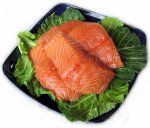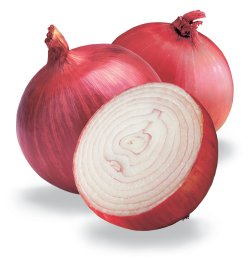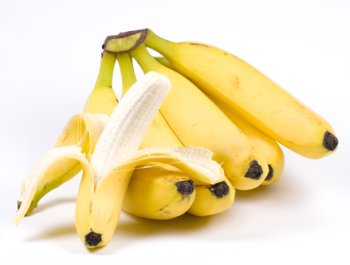Different Types of Beans
(Part 2)
On this page you'll find these types of beans discussed and their health properties:
- Black beans
For a discussion on other types of beans go to:
Part 1 - Aduki beans, Alfalfa, Broad beans (Fava beans), Carob
Part 3 - Chickpeas (Garbanzo beans), Lentils, Peas
Common Beans
Included in this category are black, haricot, kidney, lima, mung, pinto, and string (French or snap) beans. Most of them are different varieties of the common bean (Phaseolus vulgaris).
Most of the types of beans mentioned here, originated in Peru and were introduced to Europe only in the fifteenth century by Spanish explorers returning from their voyages to the New World. They subsequently spread to Africa and Asia by Spanish and Portuguese traders.
Common beans are quite versatile, as they can be prepared in a variety of ways.
I'll briefly discuss them one by one and then I'll list some of their health benefits:
Black Beans
|
Black beans are about the size of a pea, oval and jet black. In spite of their black exterior, they have cream-coloured flesh; a mild, sweet, earthy taste and a soft texture, with a flavour that has been compared to mushrooms.
They're widely used throughout Latin America, the Caribbean and the southern United States, but they're now available everywhere.
The beans have to be cooked for an extended period of time before they are digestible, and they soften during the cooking stage.
The black shells of the beans are retained through cooking, since they carry a lot of the flavour and nutritional value of the beans.
Haricot Beans
|
Haricot beans are pea-sized beans that are creamy white in colour. They're mild flavoured, dense and creamy, and are the type usually used to make baked beans.
As haricot beans are found pretty much everywhere in the world, when people think of beans, they normally think of haricots. Many markets sell them, and they can also be grown at home, if you have enough room in your garden for beans.
In addition to providing a source of food, beans are also nitrogen fixers, so they will enrich the soil that they are planted in.
Kidney Beans
|
As the name suggests, the kidney bean is shaped like a kidney. Since these dark red beans hold their shape during cooking and readily absorb surrounding flavours, they're a favourite bean to use in simmered dishes.
Kidney beans that are white in colour are known as cannellini beans.
Kidney beans are an excellent dietary selection, considering that they contain no cholesterol.
As a source of potassium, these types of beans provide a source of nutrition that is similar to that of a potato, but with only a moderate amount of carbohydrates.
Kidney beans also contain trace amounts of iron and calcium.
- Please Note: Of all the different types of beans, is essential to cook kidney beans and cannellini beans properly. This is because kidney beans contain a natural toxin (called lectin phytohaemagglutinin) that can cause stomach aches and vomiting. However, it's easy to destroy the toxin if you prepare the beans properly.
Follow these simple steps:
- Soak the dried beans for at least 12 hours
- Drain and rinse the beans then cover them with fresh water
- Boil them vigorously for at least 10 minutes
- Simmer the beans for approximately 45 to 60 minutes until they're tender.
If you buy tinned kidney beans, they have already been through this process so you can use them straight away.
Lima Beans (Butter Beans)
|
The lima beans (Phaseolus limensis) is thought to be named after Lima, Peru, where it was first cultivated.
Lima beans are most often associated with succotash, a traditional Native American dish that combines this delicious bean with corn.
While there are many varieties of lima beans, the ones most popular in the United States are the Fordhook, commonly known as the butter beans and the baby lima beans. The most common lima bean in the U.K. is the butter bean.
Lima beans are most often cream or green in colour, although certain varieties have white, red, purple, brown or black seeds.
Lima beans feature a starchy, potato-like taste and a grainy, yet slightly buttery, texture.
Mung Beans
|
The mung bean (Phaseolus aureus), unlike the other types of beans, is native to India, but has been cultivated in China and South-east Asia for thousands of years.
Mung beans are consumed normally as bean sprouts. Supermarkets often have a ready supply of fresh mung bean sprouts or you can sprout your own.
To sprout the beans, soak them overnight, rinse and then allow them to sprout for a couple of days, rinsing them regularly.
The sprouting can increase their nutritional value and make them even easier on the digestive system and don’t usually cause a gassy reaction.
Bean sprouts are a good source of vitamin C and make a nutritious addition to sandwiches and salads. Mung bean sprouts are also used in stir-fried vegetables and in Asian dishes.
- Please Note: Only few types of beans are suitable for sprouting (mung, alfalfa, chickpeas). Most of them need cooking (especially kidney beans and cannellini beans as stated above) to degrade a toxin, lectin phytohaemagglutinin, which could cause serious digestive problems if ingested raw.
Pinto Beans (Borlotti Beans)
|

Pinto beans (also called borlotti beans) have a beige background strewn with reddish brown splashes of colour. They are like little painted canvases, hence their name "pinto", which in Spanish means "painted".
When cooked, their coloured splotches disappear and they become a beautiful pink colour, with a delightfully creamy texture.
Beans, squash and maize constituted the "Three Sisters" that provided the foundation of Native American agriculture.
Green Beans
|
There are three commonly known types of green beans: string or runner beans, stringless or French beans (depending on whether the pod has a tough, fibrous "string" running along its length), and snap beans, with a thin flat pod that requires less cooking time and the entire bean, both pod and seed, can be eaten.
They are usually deep emerald green in colour and come to a slight point at either end. They contain tiny seeds within their thin pods.
Compared to the dry beans, these types of beans provide less starch and protein, and more vitamin A and vitamin C.
The green beans are often steamed, boiled, stir-fried, or baked in casseroles.
Health Benefits of Common Beans
Beans and Fibre
The major health benefit of common beans, like all types of beans, is their rich source of cholesterol-lowering fibre.
In addition to lowering cholesterol, the high fibre content of beans prevents blood sugar levels from rising too rapidly after a meal, making all types of beans an especially good choice for individuals with diabetes, insulin resistance or hypoglycaemia.
Their significant amount of antioxidants, folic acid, vitamin B6 and magnesium, makes them the ideal food to contribute to heart health.
Folic acid and and B6 help lower levels of homocysteine, an amino acid that is an intermediate product in an important metabolic process called the methylation cycle. Elevated blood levels of homocysteine are an independent risk factor for heart attack, stroke and peripheral vascular disease and are found in 20 to 40% of patients with heart disease.
Read more on the Health Benefits of Beans on Heart Disease
Beans and Antioxidants
According to studies conducted by the U.S. Department of Agriculture, on various types of beans, richly coloured dried beans offer a high degree of antioxidant protection. In fact, small red kidney beans were rated the highest, just ahead of blueberries.
According to another study, black beans crossed the finish line in first place having more antioxidant activity, gram for gram, than other types of beans, followed by red, brown, yellow and white beans, in that order.
In general, darker coloured seed coats were associated with higher levels of flavonoids, and therefore higher antioxidant activity, says lead investigator Clifford W. Beninger, Ph.D., a research associate at the University of Guelph in Ontario, Canada.
The study found that one class of compounds in particular, anthocyanins, were the most active antioxidants in the beans.
Based on a previously published study of the anthocyanin content of black beans, Beninger found that the levels of anthocyanins per 100 g. serving size of black beans was about 10 times the amount of overall antioxidants in an equivalent serving size of oranges and similar to the amount found in an equivalent serving size of grapes, apples and cranberries.
Read more on Anthocyanins
Beans and Breast Cancer
All types of beans are also protective against cancer.
In one analysis of dietary data collected by food frequency questionnaires in 1991 and 1995 from 90,630 women in the Nurses' Health Study II, researchers found a significantly reduced frequency of breast cancer in the women who had a higher intake of any type of beans.
That was not surprising; what was surprising was that only beans and lentils seemed to offer protection. Other fruits and vegetables (such as onions, apples, string beans, broccoli, green pepper or blueberries) didn't seem to offer the same protection.
Eating beans or lentils two or more times per week was associated with a 24% reduced risk of breast cancer.
Read more on the Health Benefits of Beans
Some Serving Suggestions for Common Beans

- Combine cooked kidney beans with black beans and white (haricot) beans to make a colourful three-bean salad. Mix with tomatoes and spring onions, and dress with olive oil, lemon juice and black pepper.
- Serve cooked beans over a piece of corn bread and top with grated cheese.
- In a food processor or blender, combine cooked beans and garlic, cumin and chili peppers for a delicious spread that can be used as a crudités dip or sandwich filling.
- Make tacos with a vegetarian twist by using cooked beans in place of minced meat.
- Mix puréed cooked beans with chopped garlic and your favourite fresh herbs. Use this spread as a sandwich filling or a dip for crudités.
- The heartiness of common beans makes them great soup beans, especially added to a soup that features root vegetables, such as carrots, turnips, beets and swedes.
- Blend cooked beans and sweet potatoes together. Serve this tasty dish on a plate accompanied by your favourite grain and fresh vegetable.
- Add cooked beans to a salad of leeks and chard and top with rosemary vinaigrette.
If you haven't got the time or the inclination to cook dried beans from scratch, don't be put of eating them.
I find it very helpful to keep good quality canned beans on hand and I add them to my favourite recipes. I prefer organic beans, with no added sugar or salt and I'm sure you can find them in your local supermarket.
Beans-related Articles
Different Types of Beans (Part 1) - Discussing Aduki beans, Alfalfa, Broad beans (Fava beans) and Carob. Also Carob vs Chocolate, Carob Fudge Recipe, Carob Mounds Recipe, Carob Cake recipe and Icing.
Different Types of Beans (Part 2) - Discussing Black beans, Haricot beans, Kidney beans, Lima beans (Butter beans), Dung beans, Pinto beans and Green beans.
Different Types of Beans (Part 3) - Discussing Chickpeas (Garbanzo beans), Lentils and Peas.
Beans for the HeartFor suggestions on how to go about growing your own beans, check out this website:
Search for information on this site:
Receive Discover the Power of Healing Foods! Free
Newsletter
Articles in this Series:
Different Types of Beans
Part 1 - Aduki beans, Alfalfa, Broad beans (Fava beans), Carob
Part 2 - Black beans, Haricot beans, Kidney beans, Lima beans (Butter beans), Mung beans, Pinto beans, Green beans
Part 3 - Chickpeas, Lentil, Peas
Related Articles:
Most Popular
Pages:
The Best "Fish Oil" Supplement is Not Made from Fish
Bananas for High Blood
Pressure

Elimination Diet for IBS and Other Food
Sensitivities

Healing Foods for Heart
Disease
Goodness Direct - Online Health and Special Diet Food Store
Offers products selected for those with special health or dietary needs such as Kosher, vegan, diabetic, and gluten free.
You can also find all sorts of organic tinned beans and anything else you can't find anywhere else. I absolutely love shopping there!









New! Comments
Have your say about what you just read! Leave me a comment in the box below.